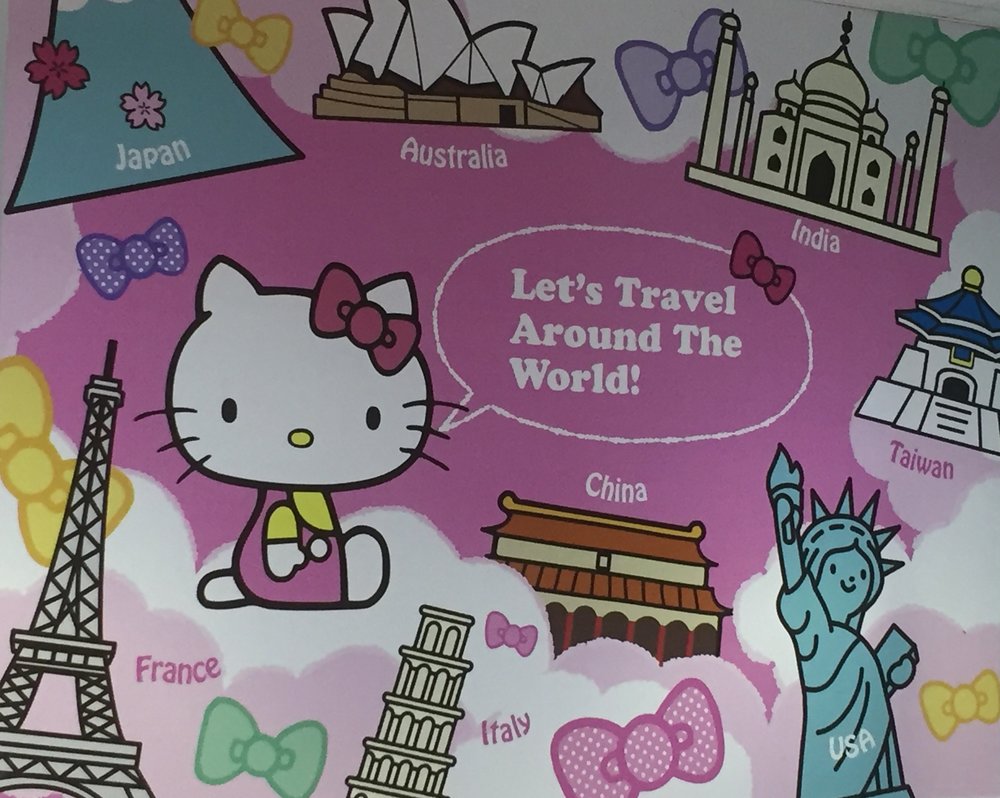How to enjoy a layover (and the secret to loving where you are, wherever you are)
I have a question for you: Is it possible to enjoy a layover?
I arrived in Taiwan just before dawn. It was misty and dark and the airport was more cozy than chaotic. After slipping into one of the extremely clean, free showers to spray my face with the shower nozzle and brush my teeth (with a toothbrush provided by my Taiwanese airline; how civilized is Asia?), I sat sipping my warm oolong tea, reading a great novel, with 3.5 hours all to myself. Submerged in foreignness, with comforting pockets of familiarity. Content as a clam.
My mind started to wander as I took note of how thoroughly I was enjoying this layover. What does it mean to feel foreign? How does that differ from being foreign? Is it just a state of mind or something more concrete? Is it fixed or constantly fluid?

I felt foreign growing up in Iowa, despite the fact that I was born there. That was a foreignness that neither put me at ease nor excited me. But while traveling electively in certain places, the feelings of “foreignness” are often so clarifying. Challenging my existing paradigms. Delighting in unexpected ways. And in the vibrant observations, finding humor, always.
On the flight from LA to Taipei I was in the aisle seat of a three-seat row. An Asian woman (whose nationality I never learned) sat near the window. She didn’t speak a word of English (not a single one) and I don’t speak any Asian dialects. And yet, even before take-off I was interpreting what she needed and wanted to the flight attendant. She smiled at me warmly and offered me some of her white, puffy, styrofoam looking snacks. And both imagining the comfort of stretching out into the empty middle seat, opted to allow our unacquainted legs to intermingle (and occasionally spoon) over the course of the 14 hour flight, without ever verbally negotiating anything.
It’s when I step into foreignness that I feel most alive. That I have the most poignant “a-ha” moments. That I delight in the everyday. That I make the most meaningful connections. That I am most myself.
And yet we cannot all hop the next flight to Foreignville at a whim. And even if we do travel frequently, it takes conscious effort to retain that feeling of clear-eyed excitement and not slip into feeling like the sad Clooney character in Up In the Air. Sometimes it’s a fine line between thrilling and depressing.
So how do we capture the wonders of wanderlust within the everyday twin constraints of Adulthood and Responsibility? What can we yield in service to this desire? What’s to be gained in momentarily being “the other”? How does this prepare us to be so much more when we do return to wherever and whomever we call Home?

We radically undervalue our connection to place and the role it plays in shaping not only the logistics of our lives but our psyches. We are a direct reflection of the diverse, often extreme locales in which we live and visit. We’re the dive bars AND the ancient temples. The cramped urban apartment AND the cabin in the woods. That’s not to say you need to move and be entirely one or the other. Nor do you need to take more exotic vacations (though if Fiji is calling you, then by all means go). But regardless of where you live and how embedded you are there, you, too, can immerse yourself in the geographic centers that tap into your internal happy place. Even with a family and a mortgage, you can capture the expansive freedom of loving the places you inhabit and feel at once foreign and familiar.
Have you ever thought about which tangible, geographic elements have a visceral effect on you? What pisses you off and what mellows you out? What inspires and what disheartens? I have. A lot. After years of not loving where I lived, I finally came to understand that my sense of place is grounded in specific principles, from the ocean to creativity to minimal driving to an avoidance of offices at all costs, to name a few.
These principles guide me as I move through the days that form my years. I know that if any one of them is lacking for too long, I become imbalanced and unhappy — and as a result, less productive and less emotionally available for those I love. Knowing how the elements of a place will affect you is an underrated exercise in self-care.
We often use the expression that we are “searching for our place,” and yet too often we ignore the literal meaning of that phrase. What is the environment you need to make your best contribution? To be the best version of yourself? And if your entire list of principles isn’t accessible 24/7, then which pieces can you accentuate and increase? And how can you create specific opportunities to top up on those things that are not immediately present, but through which you flourish?
If it’s too cold, where do you seek warmth? If it’s too urban, where do you reconnect with the earth? If it’s too noisy, where do you find peace? For some, this may mean a literal move. For others, it may involve a deliberate reworking of time and space to fulfill your place-specific needs. It’s a type of practical wanderlust you develop not as an exotic getaway, but as a satisfying, sustainable life plan.
Identify your place principles, then mindfully create a world where you can live a wanderlust-inspired existence without trading in your job/house/family. There is a happy-medium between a soul-sucking environment and a perpetual swim-up bar. But you have to know what you’re looking for before you can find it on the map.
Yours,
Anna
p.s. Know someone who is fed by wandering or who struggles to connect with their everyday sense of place? Share this with them — it may give them their own personal place-specific “a-ha” moment.

Amazon | B&N | Books Inc. | iBooks | Kobo
